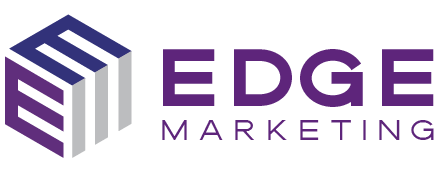by Tanya Amyote
Raising awareness around your company and its offerings should mean more than throwing spaghetti at the wall and seeing if it sticks. A strategic PR and marketing plan will get you closer to your goal, whether that’s recognition in thought leadership, an appealing product for potential investors, more clients, or all of the above.
Getting information about your company in front of the right people is integral to your success. A winning PR and marketing strategy will include both media relations and analyst relations, but what’s the difference between the two?
The point person
Who do you send up to bat from within your company, when you secure a meeting with the media? It depends on the reason for the meeting: Is your company announcing a new product or offering, a new hire, or investor news? The answer to that question will determine which representative should take the media interview. You want your spokesperson to be prepared with key messages and able to articulate that story in a simple, direct manner. Media opportunities can result in lead generation, as well as influencing and changing behaviors and perceptions.
When meeting with an analyst, your message should be tailored to that analyst’s area of expertise. Not only should the point person be able to clearly and concisely communicate your messaging, key features, benefits, and offerings; they will also need to possess a high level of tech savviness. An analyst will typically have a more sophisticated level of understanding of your corner of the industry, your product, and market trends than the average member of the media. Your analyst/spokesperson pairing is important to consider, and a developer or member of the product team is generally the best bet.
Depth and breadth of the conversation
You may have heard the phrase, “A mile wide and an inch deep,” which is a fitting way to sum up the media’s area of interest. They’re often looking at a broad landscape and, generally, they just can’t devote the time required to dig into any one area too deeply. When meeting with members of the press, it is important to know the journalist’s “beat” or area of coverage, and be able to fit your story into that narrative.
An analyst’s focus tends to be the opposite: They most likely have a very targeted level of expertise in one or two specific areas of the tech industry, but their knowledge runs deep. Analysts are consistently learning everything there is to know about your industry’s unique challenges and the tools available today. They analyze the current market, and they identify the trends emerging on the horizon.
Scheduling a briefing to keep analysts up to date on your company and products is essential. After all, they are often informing your clients’ and prospects’ purchasing decisions. Provide the analyst with your slide deck, presentation materials and agenda in advance of the briefing. Analysts want to see the product in action, but be sure to maintain control of demonstrations and scope. A briefing is not a speech; it’s a conversation: Good analysts are very well-connected and informed and can offer valuable insights. Through listening, you can determine the potential value that might result from a more extensive analyst relationship.
Timelines
You should always work to maintain ongoing relationships with media but, when engaging with a journalist, it’s typically because you have an announcement; be it a new product or feature, an upcoming event, or investor news. You want to get that news out to as many eyes as possible, and often as quickly as possible, especially if the news is time-sensitive. The timeline from pitching to the media to the news hitting the wires is often only days or even hours.
Analysts, on the other hand, conduct their research, analyze the data, and then publish their findings, resulting in a much longer turnover time of a month or more.
Output aside, an analyst can also be a long-term, trusted advisor and ally to a technology vendor, helping you shape and define your product, your strategy, and your messaging, which brings me to my final point.
Investment
By leveraging your media relationships, you can secure coverage that will expand your brand awareness and create the market perception you seek. This can be done through multiple channels: Earned, owned, shared and, of course, paid media. It may be tempting to only try one media channel at a time if you have limited resources. The reality is that, in order to generate leads and build brand awareness, paid, owned, shared, and earned media need to work together (For more on this, check out Vicki LaBrosse’s article, here.).
In contrast, an analyst is trusted to be informed, insightful and, most importantly to businesses looking for purchasing recommendations, unbiased, and a paid relationship with a vendor will not affect that. Analysts know what your customers want, what is happening elsewhere in your market, and what is coming down the pike.
Through paid analyst relations, you can gain feedback and guidance on your business strategy. On top of that, you are more likely to be mentioned in their published research findings. Being recognized by an analyst firm as a vendor to watch can be an invaluable tool when leveraged by your sales team. That third-party validation is worth its weight in gold!
Media relations and analyst relations are very different creatures, each requiring unique messaging and allocation of your company’s resources; however, as part of a comprehensive and strategic marketing and PR plan, they both lend themselves to increased recognition and credibility in your industry, which will improve the bottom line.

